In product manufacturing related to CNC machining, there is a lot to know about CNC machining axes. This is because of their importance and the fact that most modern CNC machines tend to operate using 4-axis and 5-axis CNC Machining.
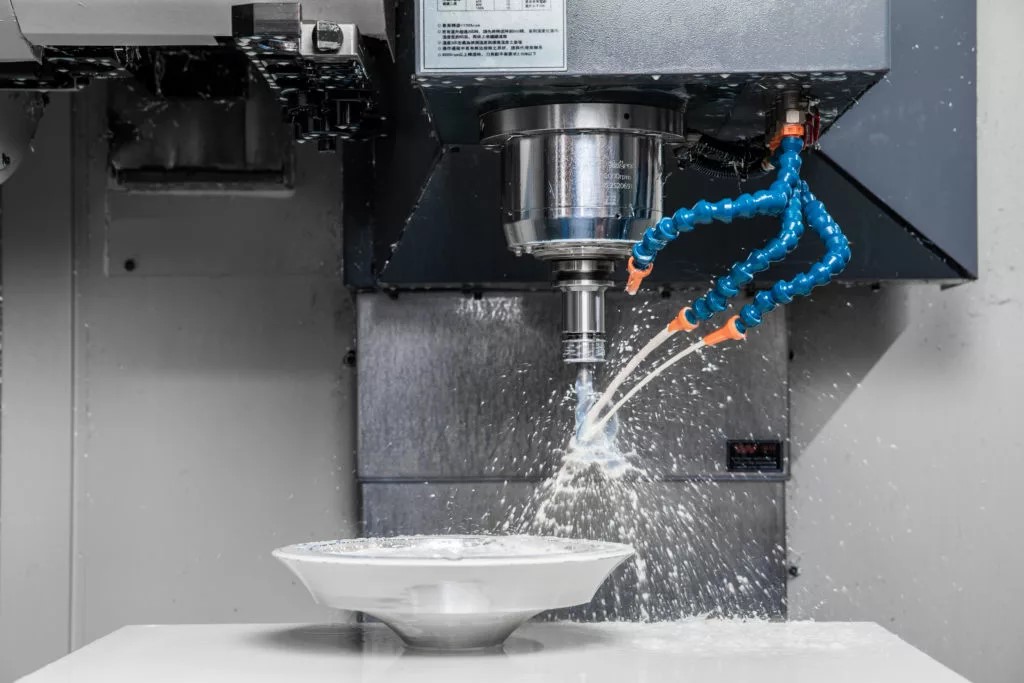
In this article, you will get to know about 4-axis and 5-axis CNC machining. This will include introducing their basic principles, their differences, and how to choose one for your machining project.
What is 3-Axis CNC Machining?
To understand 4-axis and 5-axis CNC machining working mechanisms, you need to get a clear picture of 3-axis machining, which is still the most widely used form of CNC machining today.
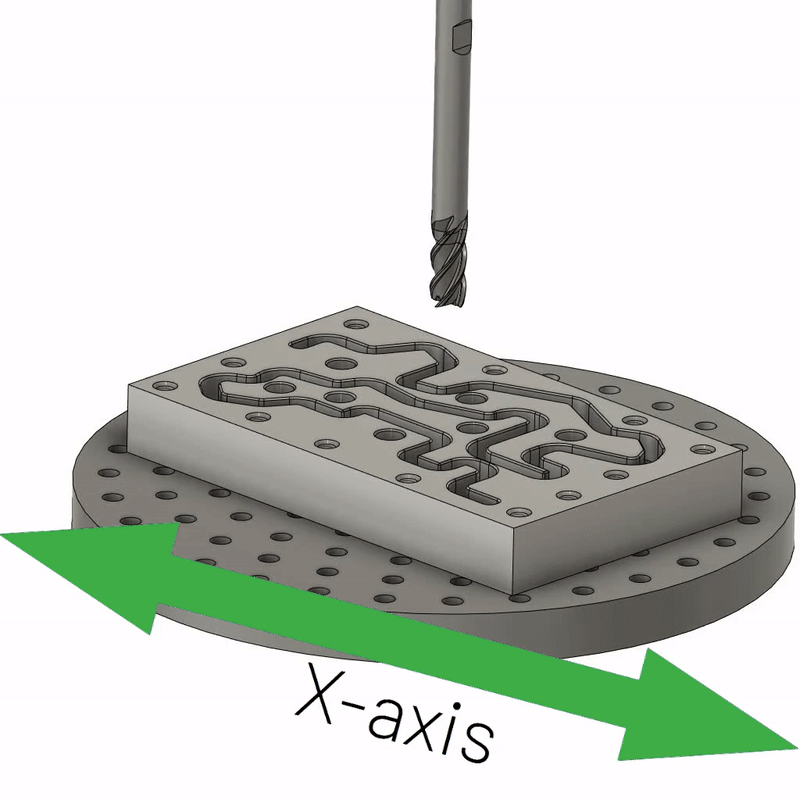
A typical 3-axis CNC machining process involves three mechanisms in part creation. One is the spindle up and down movement, while the others are by moving it side to side and back and forth.
Limitations of 3-axis CNC Machining
The 3-axis CNC machining work along three axes (XYZ). While this is a suitable way to work, it has some severe limitations.
One is that the angle of the cutting tool remains uniform which makes it harder to cut away parts of the material in hard-to-reach sections of the workpiece. Also, it may be necessary to carry out multiple setups for a part that drastically reduces productivity. These limitations are responsible for the more popular use of 4-axis and 5-axis CNC machining.
What is 4-Axis CNC Machining?
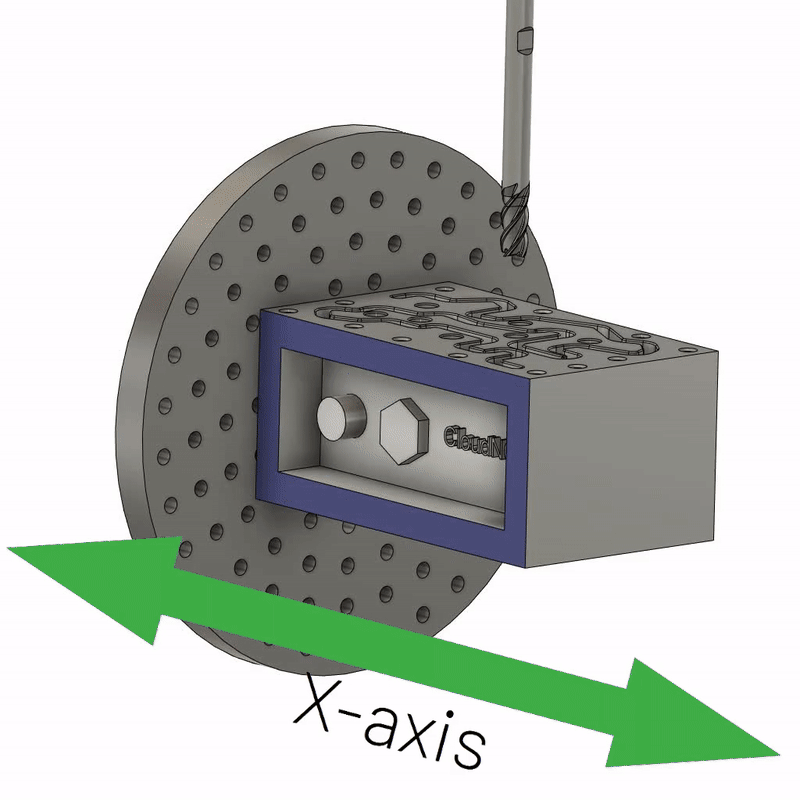
Based on the limitations of the 3-axis explained above, 4-axis and 5-axis CNC machining became more popular. The 4-axis CNC machining process encompasses the same mechanism of action. However, from its name, there is an additional axis included.
In a 4-axis CNC machine, the spindle travels along three axes: up and down, side to side, and back and forth, while the workpiece remains stationary on the machine table. The 4-axis CNC machining further rotates along the X-axis, also known as the A-axis. This extra axis allows the 4-axis CNC machining to function in situations that involve hole drilling or cut-outs.
Generally, 4-axis CNC machining is preferred to 3-axis CNC machining as it speeds up and improves the accuracy of the production process.
What is 5-Axis CNC Machining?
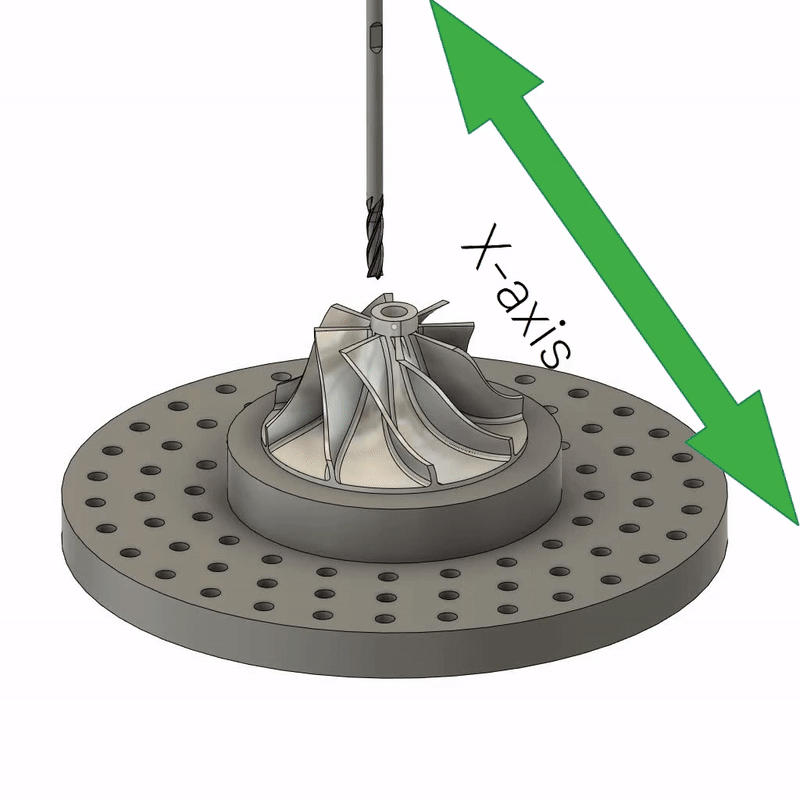
A 5-axis CNC machining process is also a lot like a 3-axis CNC machining process. However, it comes with some very important features that provide those two extra axes and a great deal more cutting flexibility.
On a 5-axis CNC machining, the spindle and cutting tool moves along three axes. However, there are other rotations on the X-axis (called the A-axis), Y-axis (called the B-axis), and Z-axis (called the C-axis). 5-axis machines can utilize any two of these rotational axes, depending on their configuration.
5-axis CNC machining is employed in different capacities based on this feature. It can perform milling, turning, etc. Therefore, you only need a single machine to work on several parts.
· 3+2 Axis CNC Machining
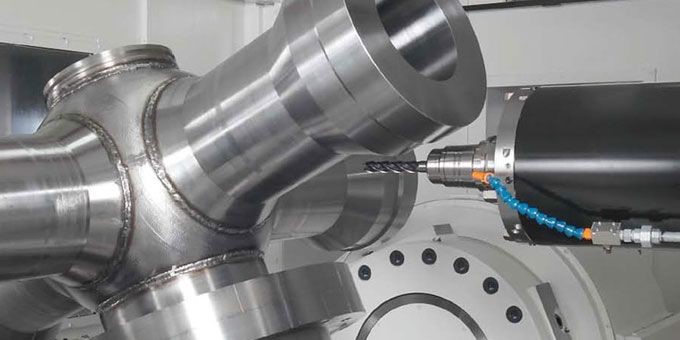
3+2-axis machining process is a subtype of the 5-axis machining process, which according to its name, is a kind of middle ground between the 3-axis and the 5-axis. Nonetheless, it is a rapid and highly effective form of 5-axis machining. It is sometimes known as positional 5-axis machining.
With 3+2-axis machining, the angle of the cutting tool does not change as the spindle or table rotates about the two extra axes. As a result, the cutting tool is not always perpendicular to the part, and it does not always create perfect cuts.
However, there is a form of 3+2-axis machining called indexed 3+2-axis machining. In this form, the angle of the cutting tool can be manually adjusted between cuts.
· Simultaneous 5-axis CNC Machining
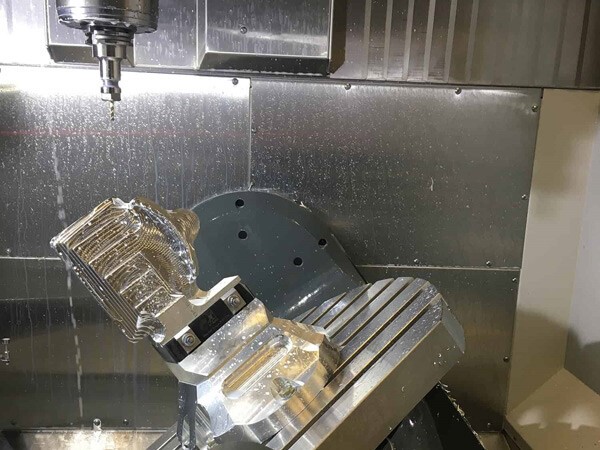
In 5-axis machining, when the cutting tool can always be kept perpendicular to the part, we have continuous or simultaneous 5-axis machining. This process can provide a superior surface finish and allows access to hard-to-reach areas. However, it is slower than 3+2-axis machining.
Differences Between 4-axis and 5-axis CNC Machining
The major difference between the 4-axis and 5-axis CNC machining is centered on the extra axes they have, and this further leads to other subtle differences.
- Difference in Axes
4-axis CNC machining has an extra axis, the A-axis, while 5-axis CNC machining has two extra, which can be A-axis, B-axis, or C-axis depending on the configuration.
- Rotation in Axes
4-axis CNC machining allows rotation on the A-axis, while 5-axis allows rotation on two of the three axes (A-axis, B-axis, and C-axis).
- Flexibility
5-axis CNC Machining has an extra axis than 4-axis CNC machining. Not only is it an extra, but it is also not localized. Localized in this context means that 4-axis CNC machining extra axis is always on the X-axis. While that of 5-axis CNC machining can either be on two of XYZ axis. This extra and unlocalized property gives 5-axis CNC machining an extra edge over 4-axis CNC machining in terms of flexibility.
- Cost
The features and functions of 5-axis CNC machining make it more costly than 4-axis CNC machining.
Regardless of their particular configurations, all 4-axis and 5-axis machines can move their cutting tools in more varied ways, and from a greater number of angles, than 3-axis machines. This allows for more complex machining operations and increased accuracy and can eliminate the need for multiple setups.
· Benefits of Using 4-axis and 5-axis CNC machining
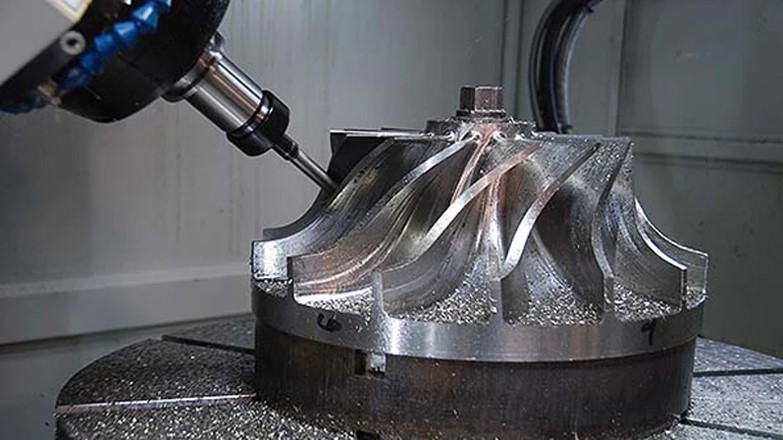
4 axis and 5-axis CNC machining provide numerous benefits from which you can decide the right one. This includes an increase in accuracy, a reduced setup time, and the potential for more complex parts.
Other specific advantages depend on the machine configuration or whether there is a utilization of 3+2-axis or continuous 5-axis.
In general, 3+2-axis machining offers advantages such as:
- Fast machining.
- Easy setup.
- Slim chance of tool interference.
Continuous 5-axis machining offers advantages such as:
- Excellent surface finish.
- Better part access.
- Less tool wears.
Applications of 4-axis and 5-axis CNC machining
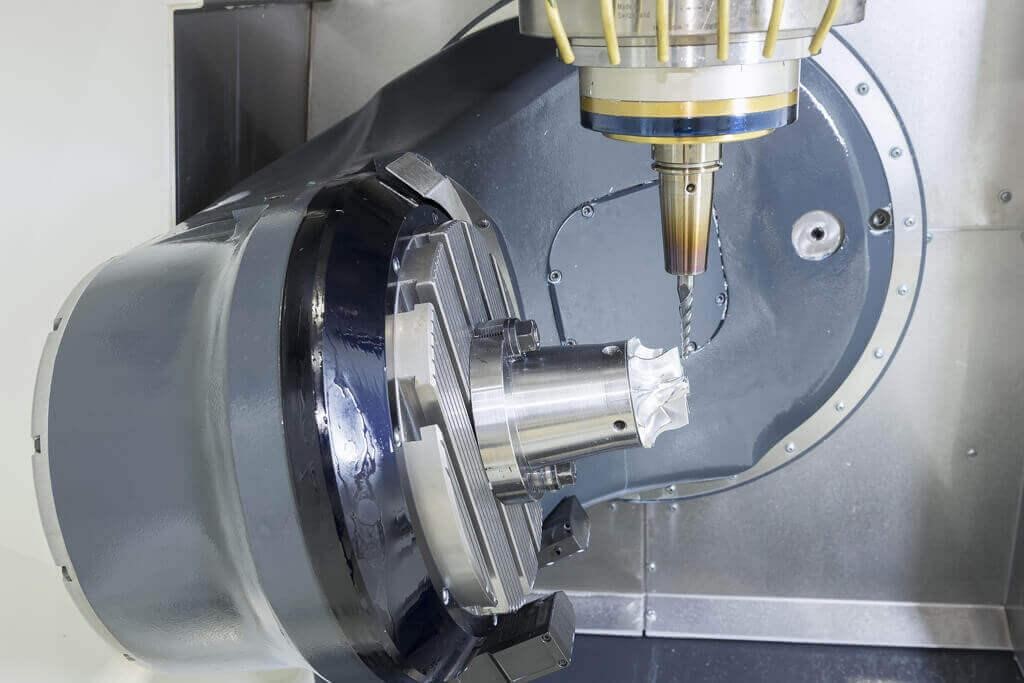
4-axis and 5-axis CNC machining are important in many scenarios related to product manufacturing. Based on the one you want, they are useful in creating molds with deep cavities, creating complex 3D shapes, and machining on tilted surfaces of a part without compromising precision.
Of the two, 5-axis CNC machining can be used for a wide variety of parts. For example, it has become particularly dominant in the production of parts like impellers and turbine blades, which have contoured surfaces unsuitable for 3-axis machining.
How to Choose Between 4-axis and 5-axis CNC Machining
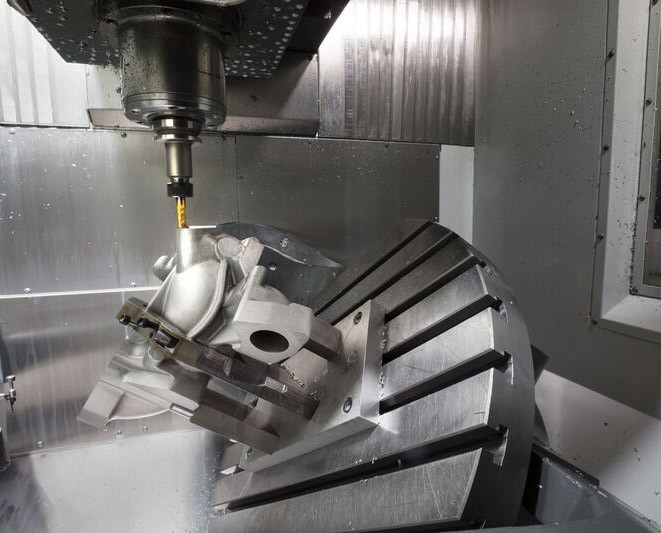
Choosing between 4-axis CNC machining and 5-axis CNC machining for your project comes with understanding a thing or two. The three important things you must consider when choosing between both are:
· Your Budget
On the budget scale, 5-axis is more costly than 4-axis, which is also more costly than 3-axis. The reason is the increase in capability, functions, and features as you move from 3 to 4 to 5.
· Your Requirements
For complex parts, you should go for the 5-axis CNC machining. However, for projects aimed at producing small and simple parts, 3-axis and 4-axis are ideal.
· Operating Procedures
The higher you go in terms of axis number, the complex it is to operate. In situations that warrant an easy operating procedure, 3-axis is the simplest, followed by 4-axis CNC machining.
Conclusion
As a beginner, getting to know the disparity between 4-axis CNC machining and 5-axis CNC machining is one step toward making the right product. This is because most CNC machine utilizes the 3-axis, 4-axis, and 5-axis CNC machining process. Therefore, this article talks about the difference between the three.
Do you think of making use of one of the two processes in your project? Why not try us at RapidDirect? Our expert team is highly knowledgeable in CNC machining, and we can guarantee high-quality products tailored to your requirements. Get in touch with a member of the RapidDirect team or upload a quote via the link below. We’re at your service!
FAQ
The XYZ axes depict the direction of movement of the CNC machine. The X-axis depicts the left and right movements. Y-axis depicts the forward and backward movement, and Z-axis depicts the up and down movement. 4-axis and 5-axis CNC machining work based on this axis with a rotatory effect on the part of the axis. For 4-axis CNC machining, a rotatory effect is seen on X-axis, while for 5-axis CNC machining, a rotatory effect is seen in two of the axes.
There is also a 6-axis CNC machining process. However, it is designed for volume machining. The 6-axis CNC machining, when used, is highly efficient, leading to a huge cut in time used in production.


